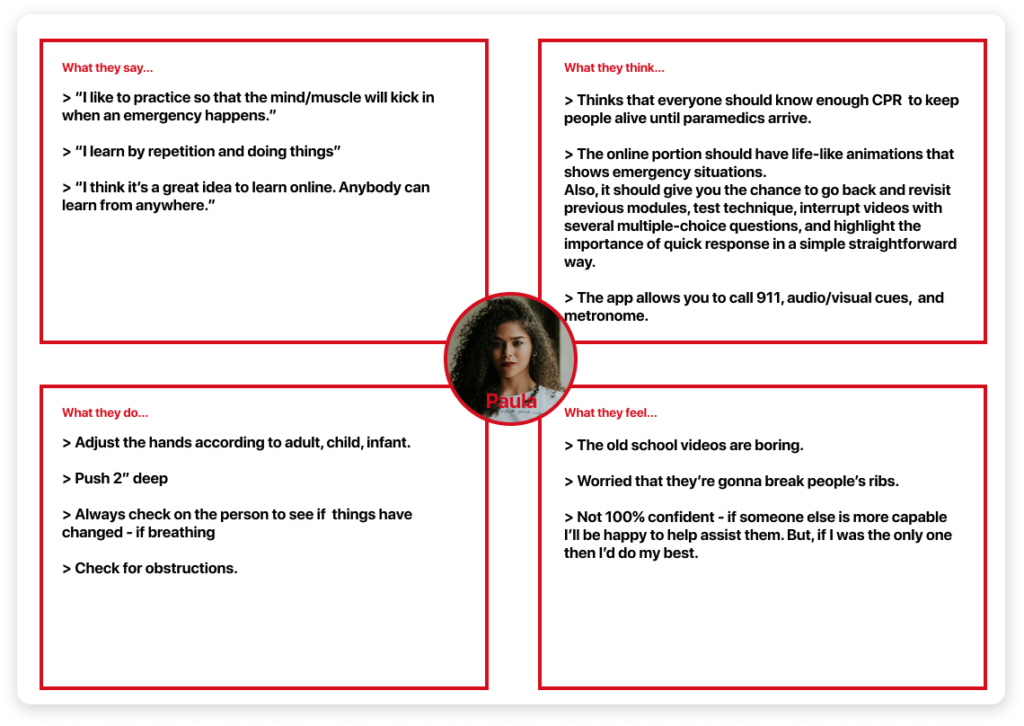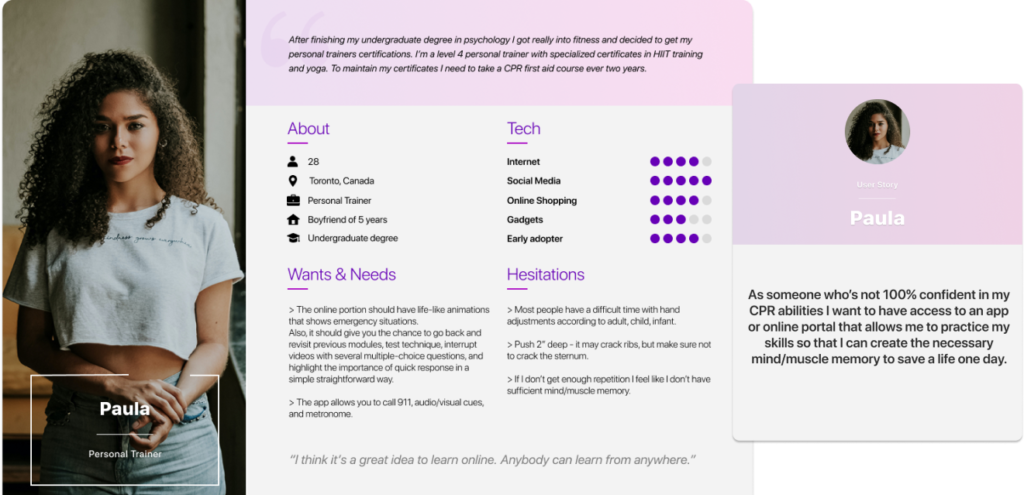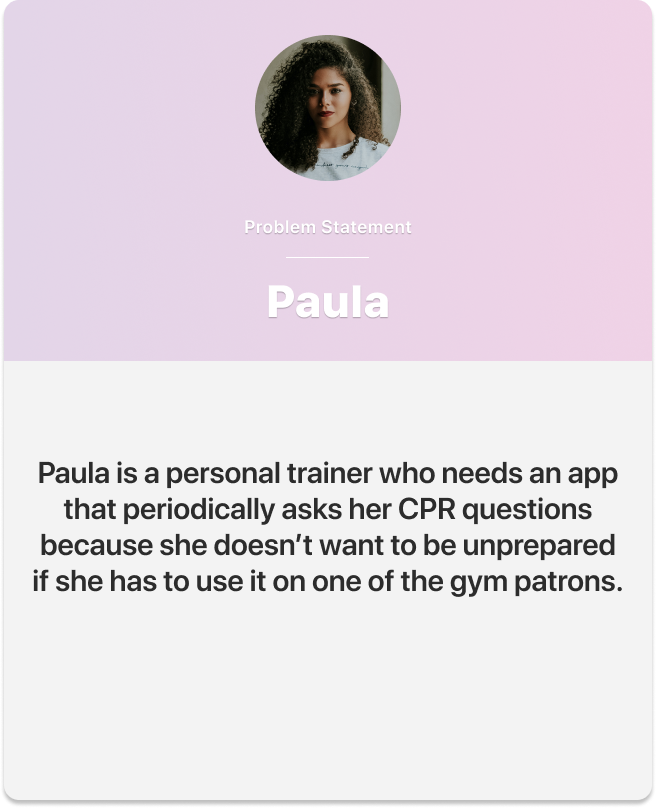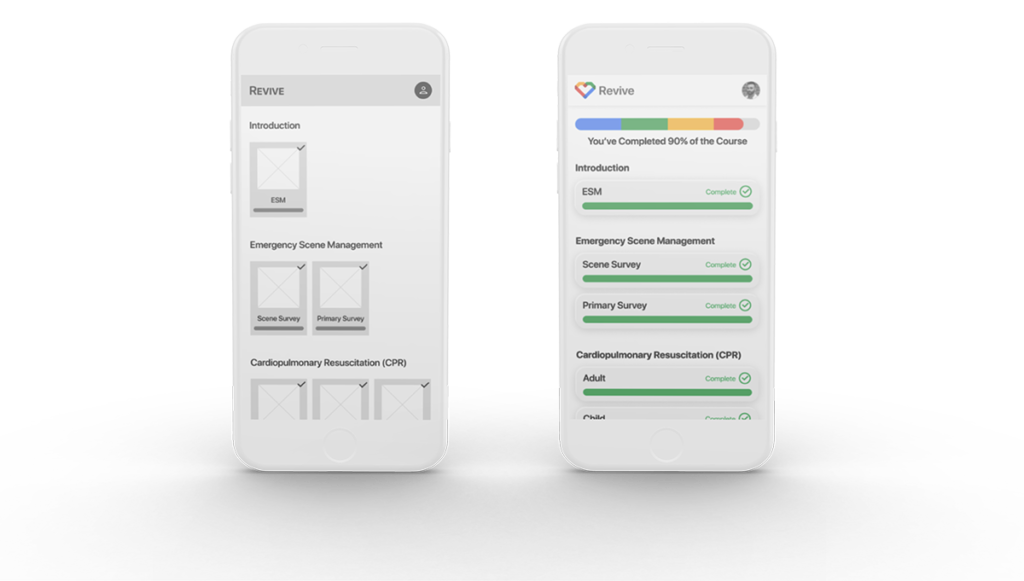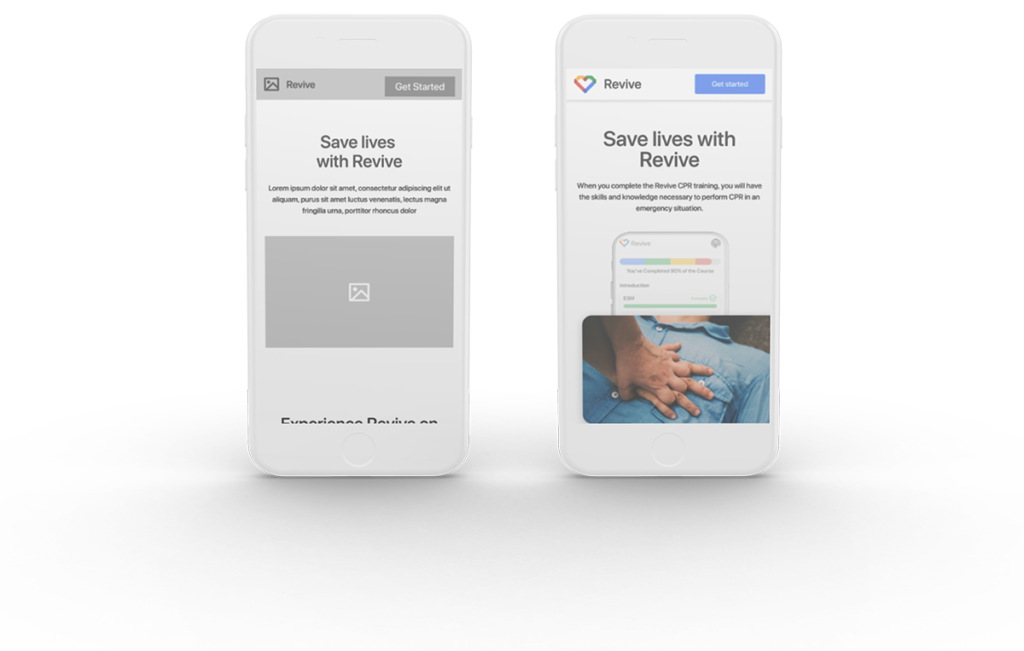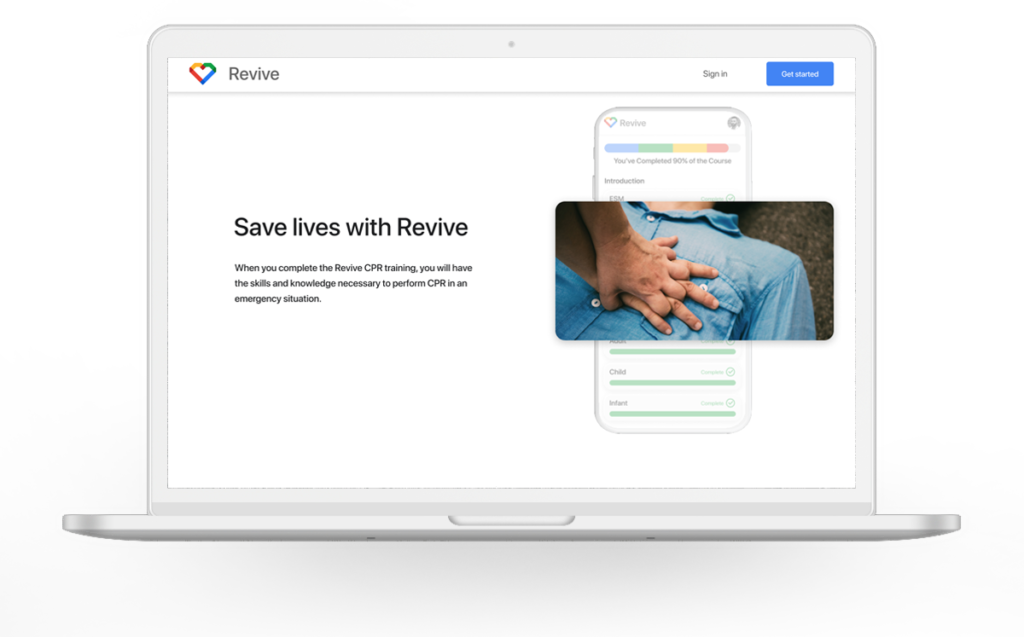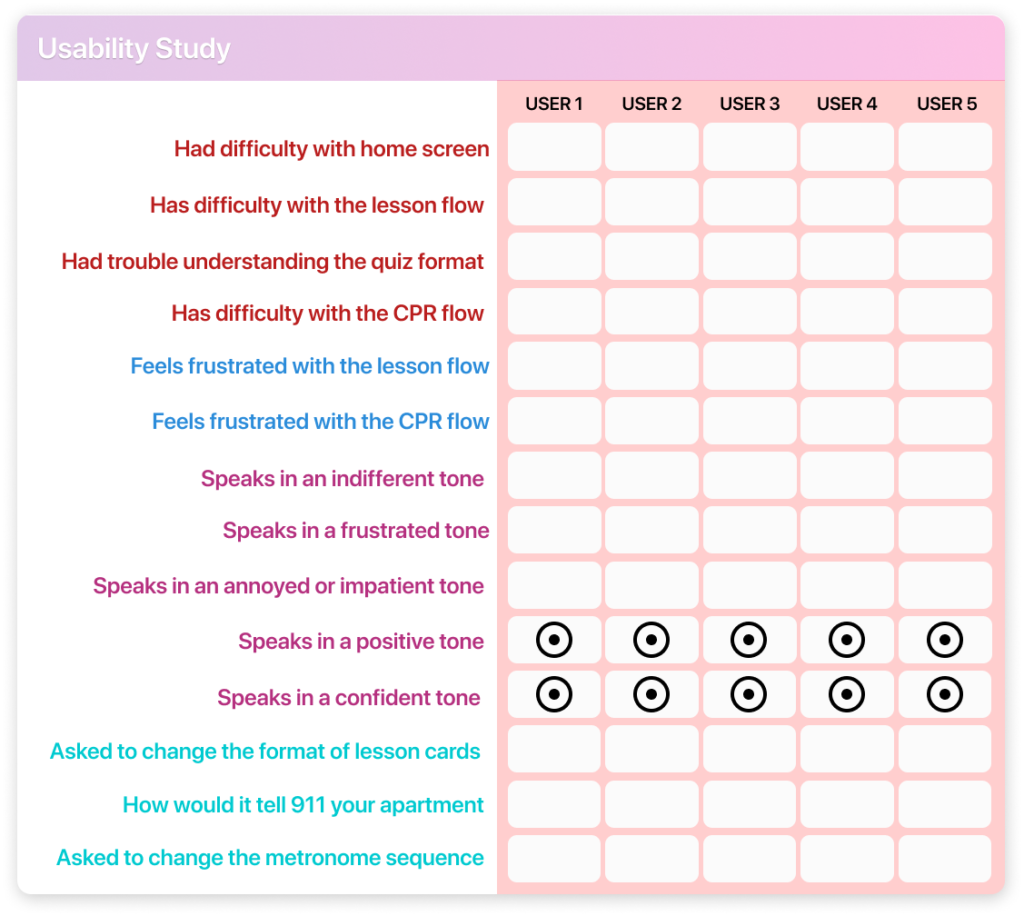CPR & Choking App
This case study explores the mobile learning flow of a CPR/choking course and the Google Assistant functionality that gets unlocked with the successful completion of the course.
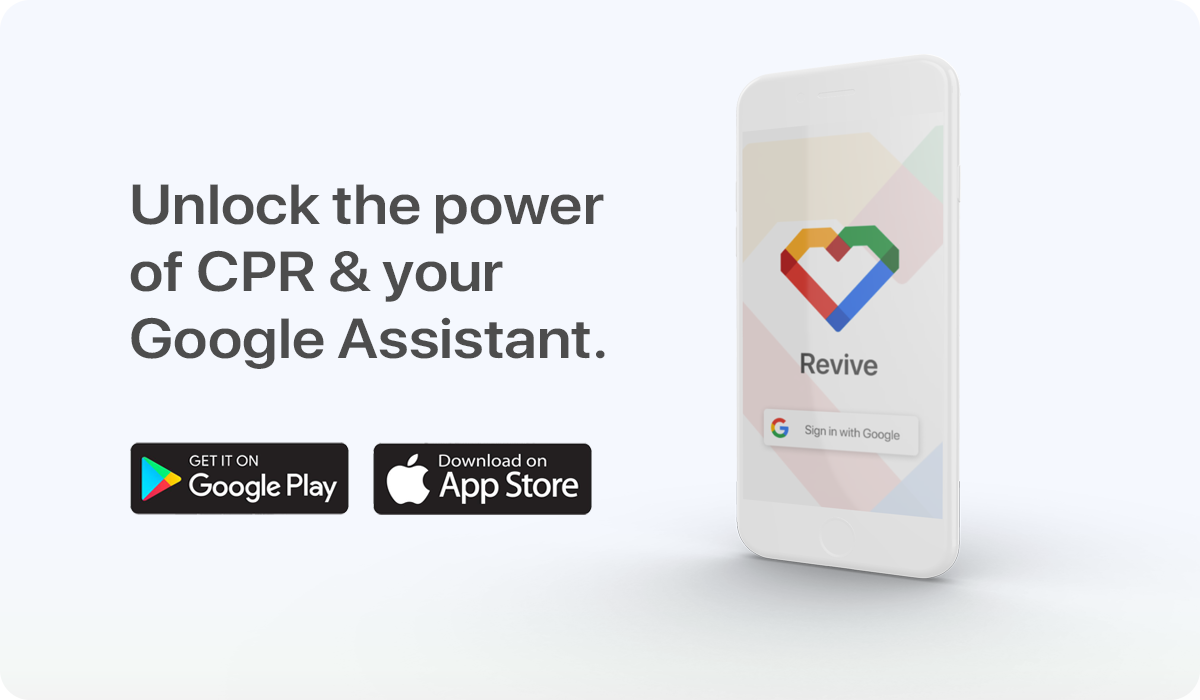
My Role
UX Designer
The Team
1x UX Designer
Duration
2 weeks
Tools Used
Figma
Photoshop
Jamboard
Google Sheets
Google Docs
My Key Contributions
Brand Creation
Competitive Research
Concept Ideation
Iconography
Interactions
Prototyping
User Research
My Role
UX Designer
Duration
3 weeks
The Team
1x UX Designer
Tools Used
Figma
Photoshop
Jamboard
Google Sheets
Google Docs
My Key Contributions
Brand Creation
Competitive Research
Concept Ideation
Iconography
Interactions
Prototyping
User Research
The Challenge
How might we get more people trained in CPR & choking emergencies and provide support in the event that an emergency happens?
Process
Learning About the Users
Interviews/Empathy Maps/Pain Points
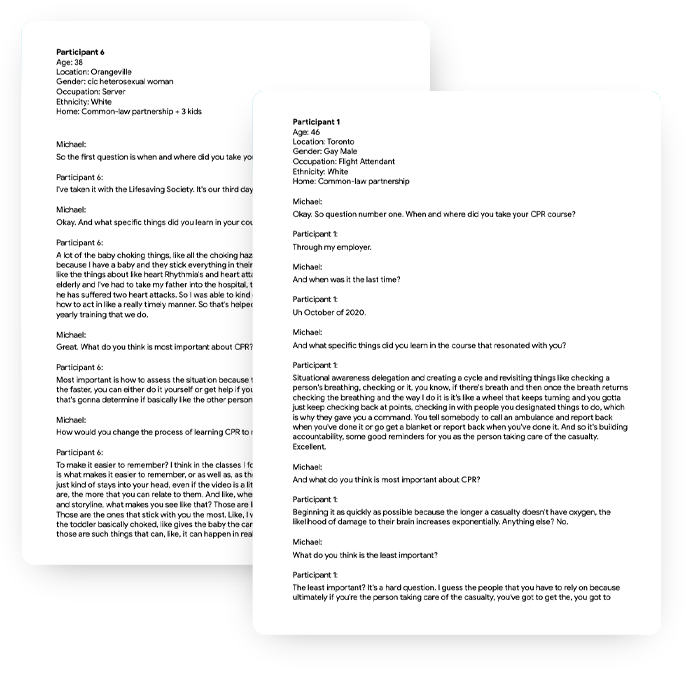
I decided that it was important to interview people who have taken a CPR/first aid course in the past to see what their pain points were.
Next, I wanted to find out how they would personally change the way they were taught to minimize or eliminate those pain points.
Lastly, I wanted to get their feedback on what features a phone app should have to reduce stress and build their confidence in an emergency was to arise.
Set the Bar
Goal Statement


My Revive app will let users learn CPR which will affect casualties who are unconscious and not breathing by giving people the skills needed to resuscitate them or until EMS arrives.
I will measure effectiveness by the number of people who complete the course.
Follow the Yellow Brick Road
User Flow
This user flow allowed me to foresee the user’s happy path throughout the car buying process.
It helped me determine:
✔️ What actions the users would take in the app.
✔️ What decisions they would have to make.
✔️ What screens they would experience after taking action or making a decision.
Validating the Work
Research Study
I asked myself these key questions and set out to find the answers:
✔️ How long does it take for the user to snap a photo of their receipt and attach it to their transaction?
✔️ Are there parts of the user flow where users get stuck?
Are there design changes I can make to improve the user experience?
✔️ Is there anything that users want to see added to this feature?
✔️ Are there any reasons why users wouldn’t use this feature?
How did it Go?
Usability Test
One of the KPIs that I set out to test was: system usability scale. I asked participants several questions centred around ease of use, learning curve, consistency, and lastly about their confidence throughout the app.
Results
Ease of use: 40% of the participants disagreed, 27% agreed, and 33% strongly agreed that it was easy to use.
Usefulness: 40% strongly agreed, 50%, agreed, and 10% disagreed that there was a steep learning curve.
Learning curve (Google Assistant): All participants believed that there wasn’t a learning curve with the Google Assistant feature. 27% strongly agreed while 73% just agreed.
Learning curve (Course Dashboard): There was a mixed opinion about the learning curve for the course dashboard. 33% strongly agreed that there was a steep learning curve, 27% agreed, while 40% disagreed.
Results
Ease of use: All participants thought the feature was easy to use. 80% strongly agreed and 20% agreed.
Usefulness: 80% strongly agreed, 10%, agreed, and 10% disagreed that there was a steep learning curve.
Learning curve (Google Assistant): All participants believed that there wasn’t a learning curve with the Google Assistant feature. 80% strongly agreed while 20% just agreed.
Learning curve (Course Dashboard): All participants believed that there wasn’t a learning curve with the Google Assistant feature. 80% strongly agreed while 20% just agreed.
Building Upon What was Learned
Iterations
Course Dashboard
HOVER OVER THE HOTSPOTS FOR DETAILED INFORMATION
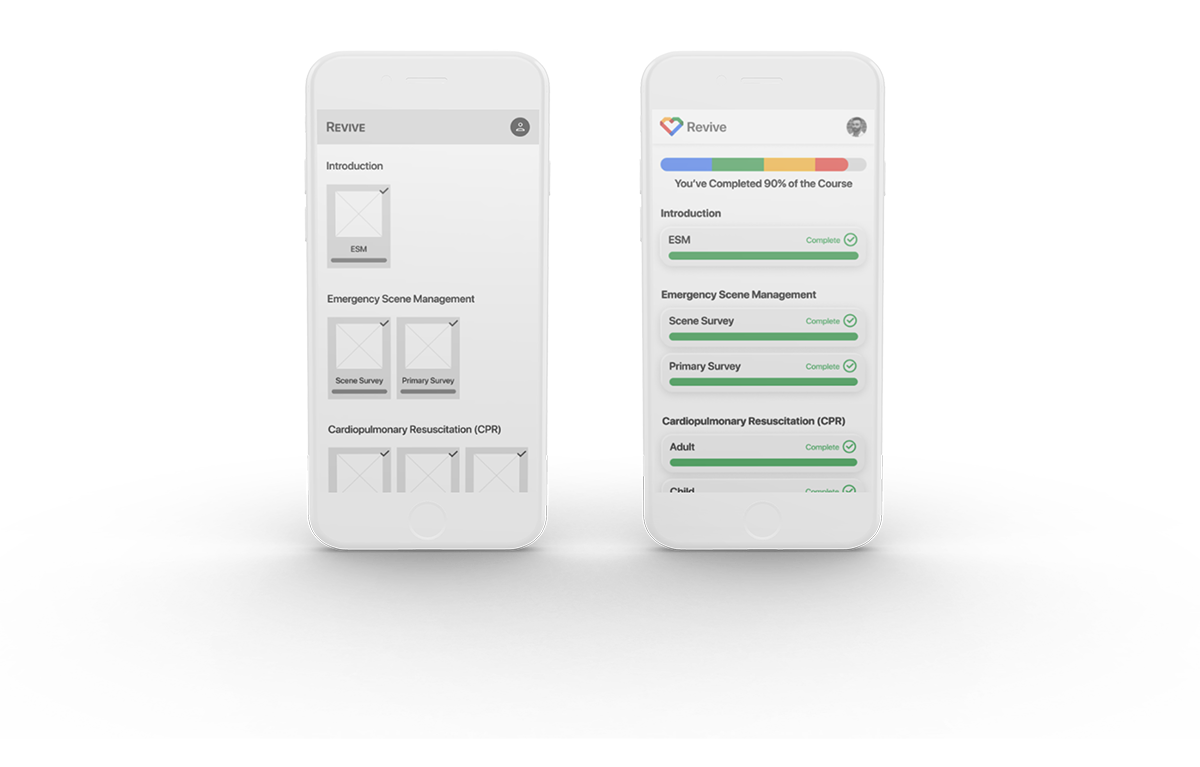
3 of 5 participants wanted to change the style of the card.
1 of 62 of 5 participants didn’t understand that line at the bottom was a lesson progress bar.
2 of 61 of 5 identified didn’t understand that the checkmark represented “complete.”
3 of 61 of 5 participant indicated that they wanted a progress bar at the top.
4 of 6Cards were changed and “Complete” was added next to the checkmark to confirm lesson completion.
5 of 6A progress bar was added to the top.
6 of 6Lesson Flow
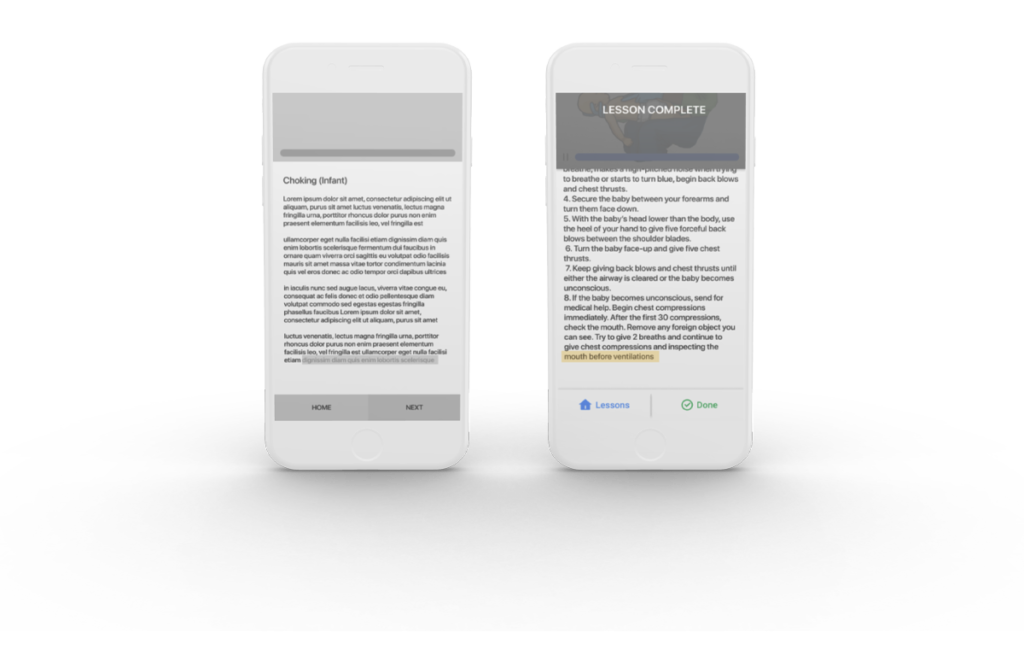
2 of 5 participants struggled with next button. They didn’t know how to proceed.
1 of 3Text was changed to “Done” to indicate that the lesson had been completed.
2 of 3“Lesson Complete” was overlayed on top of the video player as double confirmation.
3 of 3Buttons & Input Fields
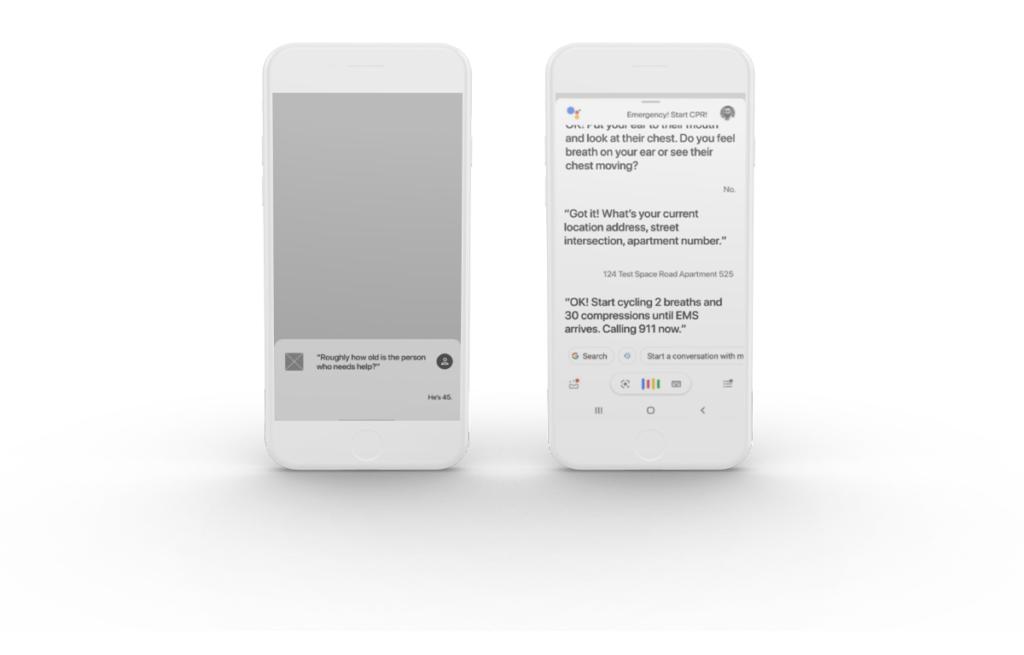
1 of 5 participants indicated that they would need confirmation at each interaction with the Google Assistant so that they know she understood and recorded the information.
1 of 41 of 5 participants asked how the Google Assistant would know what apartment you were in.
2 of 4I added “Got it!” and “OK!” to indicate that the assistant understood.
3 of 4I added an extra step in the Google Assistant flow that requested an address/apartment number or street intersection.
4 of 4How do I Look?
Brand Identity

For Here or To Go?
Take Away
As a former lifeguard/swim instructor/CPR & first aid instructor, I know how important this app would be if it was actually created – especially if Google was to take it up as one of their projects. There would definitely be more interest in learning the information that arms them with the necessary tools to save lives.
In a big city, EMS can show up within minutes, but in other parts of the country, it could take 10x as long for EMS to show up. Remember, it only takes 4 minutes for the oxygen-starved brain to start dying which makes it harder for medical professionals to resuscitate casualties once they’re in the back of an EMS truck.
